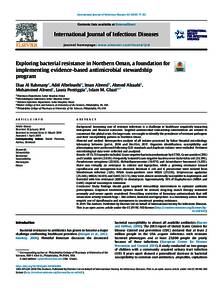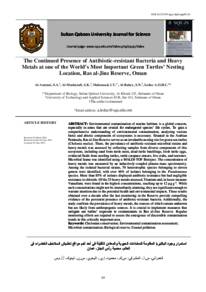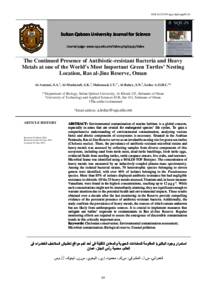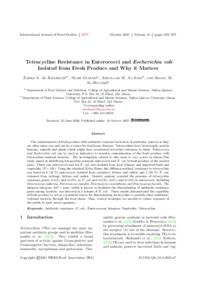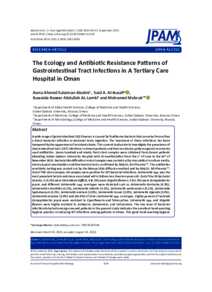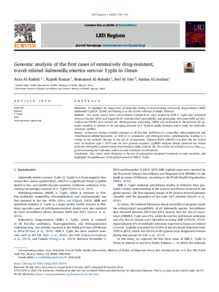Document
Exploring bacterial resistance in northern Oman, a foundation for implementing evidence-based antimicrobial stewardship program.
Identifier
DOI: 10.1016/j.ijid.2019.04.004
Source
International Journal of Infectious Diseases. v. 83, p. 77-82
Contributors
Al-Beloushi, Adel., Author
Al-Reesiyah, Iman., Author
Al-Zaabi, Ahmed., Author
Al-Reesi, Mohammed., Author
Pontiggia, Laura., Author
Ghazi, Islam M. , Author
Country
Netherlands.
Publisher
Elsevier B.V.
Gregorian
2019-06-01
Language
English
English abstract
Background: Increasing rate of resistant infections is a challenge to healthcare negatively impacting therapeutic and financial outcomes. Targeted antimicrobial stewardship interventions are needed to counteract this global crisis. On large scale, we sought to identify the prevalence of resistant pathogens and their susceptibility pattern in Northern Oman. Material and method: Retrospective analysis of all isolates processed by Suhar Hospital microbiology laboratory between Jan1st, 2016 and Dec31st, 2017. Organism identification, susceptibility and phenotyping were performed following CLSI standards and duplicate isolates were excluded. Pertinent microbiological data were collected and analyzed. Results: Of 15,733 samples included, Gram-negative bacteria predominate by 67.76%, Gram-positive (29%) and Candida species (2.63%). Frequently isolated Gram-negative bacteria were Escherichia coli (32.39%), Pseudomonas aeruginosa (22.16%), Klebsiellapneumoniae (19.97%) and Acinetobacter baumannii (5.22%), there was virtually no resistance to colistin and tigecycline, while a growing resistance toward ciprofloxacin and meropenem was observed. Resistant E. coli and K. pneumoniae were isolated from bloodstream infection (12%). While Gram-positives were MSSA (27.23%), Streptococcus agalactiae (25.36%), MRSA (16.10%) and CoNS (12.1 %), they were almost universally susceptible to daptomycin and linezolid with low resistance (8˜20%) to clindamycin. Approximately, 50% of Staphylococci (MRSA and CoNS) required vancomycin treatment. Conclusion: Study findings should guide targeted stewardship interventions to optimize antibiotic prescriptions. Empirical treatment options should be revised, drug-bug match therapy instituted promptly and newer agents considered. Prescribing restriction of formulary antimicrobials that still retain their activity towards bugs – like colistin, linezolid and tigecycline- is a mandatory action. Review empiric use of ciprofloxacin and meropenem to counteract growing resistance.
ISSN
1201-9712
Resource URL
Category
Journal articles

